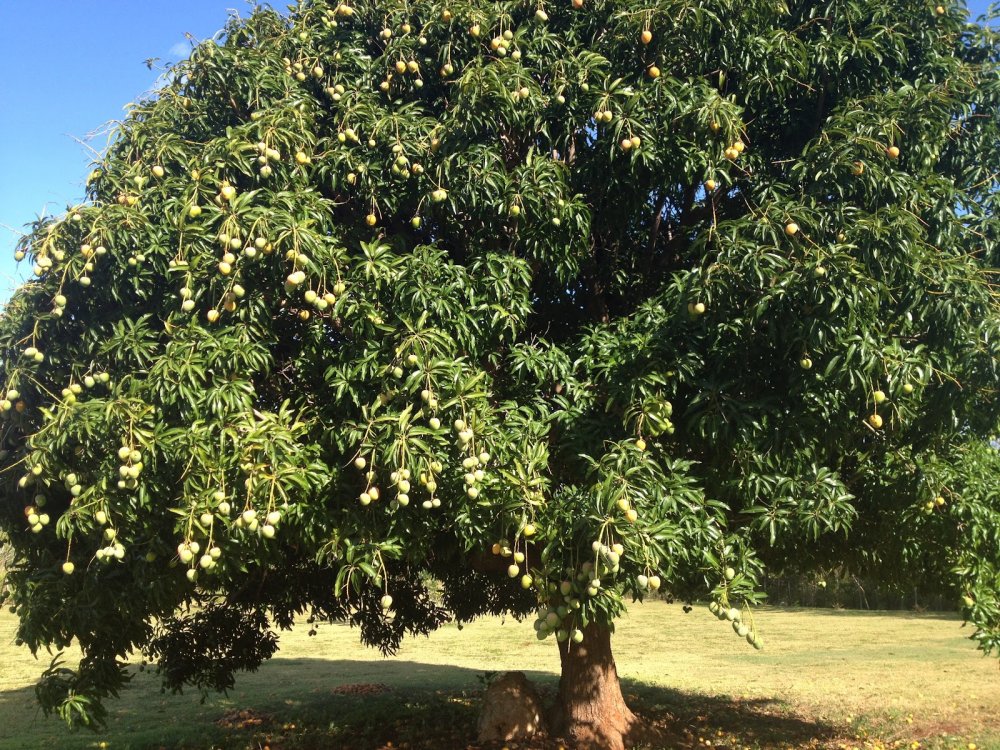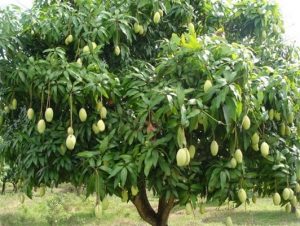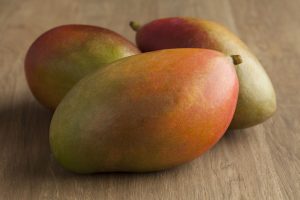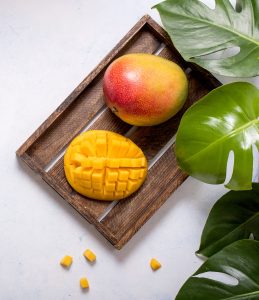When it comes to prepping, you have to be reasonable and go with what works best in your region. I love Mangos but realistically they just don’t do well where I’m from. Luckily for me, they do grow in Florida, and a friend of mine, Pete Gandolfo happens to have a great Mango tree and shared information about them for us, in case you live in an area that Mango trees grow well.
Mangos are a sweet, juicy tropical fruit that typically become ripe in summer. This juicy stone fruit that belongs to the cashew family.
Mango trees grow anywhere from 115–131 feet tall, with a crown radius of 33 feet. The trees are long-lived, as some specimens still fruit after 300 years.
Classified as drupes, mangos vary in shape (nearly round, oval, ovoid-oblong), size, and color depending upon the variety. Mangos may be greenish, greenish-yellow, yellow, red, orange, or purple and weigh from a few ounces to more than 5 pounds (2.3 kg). The skin is smooth and leathery, surrounding the fleshy, pale-yellow to deep-orange edible portion. The fruits possess a single large, flattened, kidney-shaped seed that is enclosed in a woody husk.
Mangos have been cultivated in Asian for 1000s of years. They eventually made their way to East Africa and then to Brazil, Bermuda, and Mexico. Nowadays they grow in most frost-free tropical or warmer subtropical climates.
In general, mangos in Florida should be planted in the warmest areas of the state, i.e., along with the southeast and southwest coasts.
In Florida, mangos bloom from December to April depending upon climatic conditions and variety. Pollination is by various insects such as thrips, flies, and, to a small extent, honey bees.
So why grow mangos? Well, besides the fact that they taste great, the fruit has more than 20 vitamins and nutrients. Mangos are a superfood and a cup of mangos is just 100 calories, so its a healthy, sweet treat.
Mangos are a wonderful addition to salads, along with other fruits such as mandarin oranges, grapes, apples, and pineapples. Impressive amounts of vitamin C, vitamin A, and flavonoids like betacarotene, alphacarotene and beta-cryptoxanthin in mangos help provide benefits, such as healthy immune function, normal blood pressure, good vision, and strong bones, plus added protection from lung, mouth, colon, breast and prostate cancers, leukemia, and stroke. Vitamin B6 (pyridoxine) produces hormones in your brain.
So how do you grow a mango tree?
Mangos have been called the “king of fruits,” because they are luscious, juicy, delicious, and sweet. They’re widely cultivated in tropical and sub-tropical climates. The best time to plant a mango tree is in the summer when it’s warm, as they like lots of sun. This is why mangos do better in places like California and Florida.
To grow a mango tree, you’ll want to start by preparing the mango seed.
- Take a very ripe mango, and cut the fruit away from the husk at the center of the mango without cutting through the husk. Remove any leftover fruit from the husk.
- Cut the husk open with a sharp knife. Do this carefully, as you don’t want to damage the seed that is inside.
- Remove the seed and throw the husk away. The seed will be in the shape of a lima bean with a lighter area on top called the eye.
- Fill a planting pot with potting soil. Be sure to use a pot with drainage holes.
- Wet the soil a bit.
- Make a small hole and place the seed inside the hole with its eye facing up.
- Cover the seed with half an inch (1.27 centimeters) of soil. The seed should sprout within a few weeks.
- Water your plant with lukewarm water whenever you see the soil is a bit dry. Mangos don’t need a lot of water.
- Replant the plant outdoors when it’s strong enough
Position your tree where it will receive full sun for best fruit production. New mango tree planting is done in late winter to early spring when the plant is not actively growing.
Prepare the site for your mango tree by digging a hole that is twice as wide and deep as the root ball.
Once you plant it outside remember to water the new tree to or three times in the first week, flooding the area surrounding the trunk. Also fertilize the tree after new growth begins, giving it a high nitrogen plant food, at least once a month. This will encourage flowering and fruiting.
Keep the soil evenly moist. Sprouting should occur in about 2 to 3 weeks.
Mango tree care is similar to that of any fruit tree. Water the trees deeply to saturate the long taproot. Allow the top surface of the soil to dry to a depth of several inches before watering again. Withhold irrigation for two months prior to flowering and then resume once fruits begin to produce.




